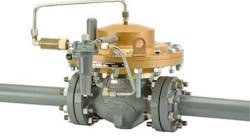Shutdowns, turnarounds and outages (STOs) have always been challenging for plant personnel. Unfortunately, this difficult undertaking has been rendered significantly more problematic by the lengthy and unpredictable lead times for parts that have become commonplace. Even worse, severe shortages of capable technicians and repair personnel continue to bedevil planning teams, making it hard to staff a turnaround, much less react quickly to unexpected problems when they are discovered during the outage.
This article examines how labor shortages and part procurement issues are impacting STO planning and execution, and it offers strategies to minimize their negatives effects.
A typical STO
STO planning and successful execution has never been easy. A typical plant maintenance staff expands to hundreds of workers, and years of work may be compressed into an outage of one to two weeks. In many cases, the plant lacks the labor necessary to execute this work, so it engages multiple contractors to install/upgrade tanks and vessels, pull and repair control and relief valves and help manage the myriad tasks that must be executed.
Careful pre-planning of all this work is a critical success factor. The required tasks must be fully defined, the necessary parts and materials must be acquired, and the work teams must be carefully coordinated to maintain efficiency and complete the work in as compressed a timeframe as possible.
These challenges have always been true for STOs and remain so today. However, the post-Covid era has had significant impacts on STO planning and execution, and plants are having to employ new methods and strategies to address those changes and avoid major plant disruptions.
A changing landscape
In these post-COVID times, virtually everyone is battling two major headaches. The first has been a major disruption in the supply chain. Historically, most parts were either stocked or could be obtained with just a few days of notice. Planning was still very important so the parts could be on hand and instantly accessible, but even when unexpected damage was discovered, the repair parts could be easily obtained quickly, or at worst an entire replacement assembly could be ordered and delivered for installation.
Unfortunately, that is no longer true. These days, far fewer items are stocked, and lead times for even common repair parts can be erratic and variable. The typical fallback solution of replacing the whole assembly is often no longer an option because it may not be available either. This is especially true when the part involves specialty materials of construction. Because of this, discoveries of unanticipated damage can become a show-stopper, forcing the plant to remain out of production until a part can be found, or an alternative solution devised.
The other problem is a severe shortage of skilled labor. In the past, big plants scheduled total facility outages and engaged armies of contractors to perform capital expansions, maintenance repairs, valve refurbishment and all manner of other tasks that could only be accomplished when the plant was out of service. Taking down the entire facility was easier as many plants were not sold out of their production months in advance, and little, if any, coordination with other plants in the area was considered as the supply of available workers was typically not an issue.
That, too, has changed. Now plants and contractors are scrambling to find capable workers. The support firms that do have good staff are often booked months in advance, and most lack the additional resources to expand quickly to address an unexpected need.
STO execution strategies
These labor and part limitations have conspired to make STO planning and execution much more difficult. In response, many forward-thinking plants have instituted several changes to limit risk and create the best opportunity for success. Any or all these changes may be worth considering for your facility:
- Stocking more spare parts — Supply chain disruptions are forcing plants to either increase the number of replacement parts they have on hand, coordinate with parts suppliers to ensure that the parts they need are readily available, or both.
- Limiting suppliers and/or standardizing on specific control valve/relief valve models — As much as possible, plants are trying to standardize on a much smaller number of part makes and models. By eliminating one-off parts and replacing obsolete items, the number of required spare parts is reduced, and a replacement part or assembly is more readily available.
- Beginning pre-STO planning earlier — Supply chain issues are forcing plants to start their STO planning well in advance so the work can be fully defined, and the parts ordered early enough to ensure availability.
- Incorporate what-if analysis into the planning process — During the pre-STO stage, the plant should be anticipating what unexpected discoveries might occur and how each will be addressed.
- Plan shorter, more limited outages — Rather than taking the whole plant down and doing everything at once, facilities are taking down individual units and concentrating their efforts on fewer tasks. In addition, most outages are now dedicated to maintenance and/or capital expansion, but rarely both.
- Coordinate with other plants in the area — Realizing that local contractors have limited resources, many facilities are coordinating their STO with neighboring plants, so they stand a better chance of obtaining the resources they need.
- Engaging capable outside resources early — Resource-constrained plants are utilizing carefully selected outside contractors to help them plan and execute their STO. Early integration helps confirm that the STO has been fully planned and the work defined as much as possible. With this knowledge, the facility can coordinate the labor requirements with their contractors to make sure they have the available staff to complete the work.
Pitfalls to avoid
All these ideas can help improve the odds for STO execution success, but there are several potential issues that can create significant startup delays or result in unreliable plant operation post-shutdown. The STO team would be wise keep a wary eye out for these problems:
- Counterfeit parts. The lack of available parts is forcing many purchasing departments to deviate from their usual suppliers to obtain the parts and equipment they need. This has created an explosion of bogus and counterfeit part manufacturers that are quick to offer in-stock parts. Unfortunately, many of these parts will either not work at all or work just long enough to get the plant back into operation before they fail. Be wary of any vendor offering genuine parts that are unavailable through the usual channels. In the case of critical equipment, it may be wiser to replace a whole assembly rather than risk using a part of unknown origin.
- If outside valve/instrument repair contractors are used, be sure they are certified and/or accredited. This is especially true if the plant has no prior experience with a particular repair service shop. Uncertified repair facilities are more prone to either perform unsatisfactory repairs or use counterfeit parts.
- If outside pre-planning contractors are engaged, assign them tasks that suit their skill set. For example, a valve vendor may offer services to walk down the plant’s control valves and ensure the necessary parts are either in stock or readily available. They are also well suited to help manage the valve repair process. However, that same firm may not be a good choice for evaluating boiler steam drum weld repairs. Similarly, a large mechanical contractor might not be the best choice to evaluate potential control valve and instrument repairs.
Conclusion
Careful and advanced pre-planning remains a key success factor for any STO, but the game has changed as far as resource availability and part availability. Limiting outage scope and duration, avoiding STO timing that competes with other turnarounds, and locking in competent contractor resources well in advance can help address the labor shortage problem. Part procurement challenges are best resolved by a careful analysis of the actual and potential parts required so they can be acquired in advance. Increasing stocked parts and utilizing more standardized equipment can reduce the odds of a start-up delay due to missing parts.
If the plant lacks the necessary resources, it should engage knowledgeable partners to evaluate their needs and supervise, for example to manage the valve maintenance and repair process. The best advice is to select a partner carefully, and then engage them early enough to complete the evaluation process and obtain the necessary parts well in advance.
Scott Grunwald is the service outage planning program manager for North America, based in Marshalltown, Iowa, where he works with the North America Sales and Service channel for Emerson. He holds a BA degree in Business Management from Lewis University.
Karl Lanes is the senior director of global project pursuits at Emerson, based in Marshalltown, Iowa, where he ensures Emerson product offerings align with customer needs and expectations for their projects. He is also responsible for global parts distribution of Emerson’s final control products.



